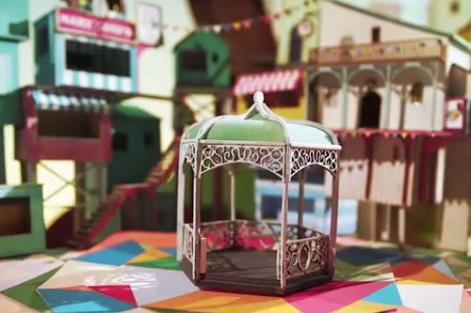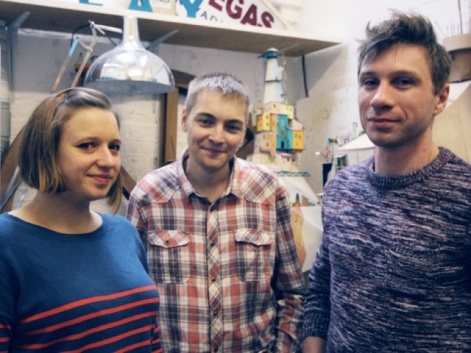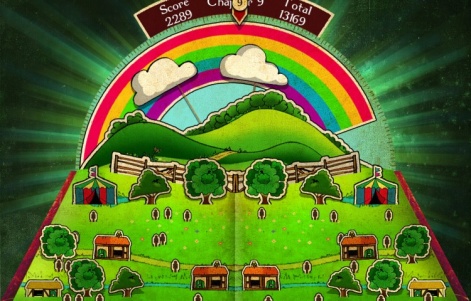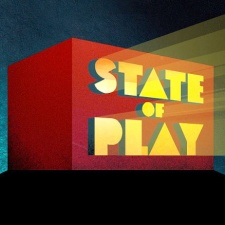Starting a company from scratch is a daunting task.
Much like game development itself, the pressure that comes from planning, organising, and then turning that company into a success could be enough to suffocate even the most optimistic developer.
For the folks over at London-based State of Play, however, building things from scratch is one skill that comes naturally.
You see, State of Play isn't like any other developer you've heard of, because they don't just make their games using digital tools.
Instead, they also create their titles in the physical world, handcrafting levels using real materials, and filming everything in real-time before inserting characters with the use of some industry magic.
It's a process that has seen the firm create beautiful mobile experiences such as KAMI and Lume: the latter of which was nominated for an IGF award in 2012.
With pedigree such as that, it's perhaps unsurprising that State of Play's upcoming title, Lumino City, looks set to be one of the most unique and exciting games of 2014.

So, with one more finish line in sight, we thought we'd catch up with State of Play's co-founder Katherine Bidwell to find out more about the studio's journey from small-time startup to one of the industry's brightest creative prodigies.
Building blocks
"Both myself and co-director Luke set up the company in 2008. At the time Luke was a Flash freelancer making browser-based games, and I was working for an advertising company making games and websites," explains Bidwell.
"Eventually though, we realised that instead of working for someone else we should work together, and, because we had a developer on board at the time, it just sort of made sense to expand the company in a creative way and make things that we wanted to make.
"At that point we were doing browser-based games for clients such as Miniclip, MTV, BBC, and HSBC, and then we also did animations, which were generally for charities.
We're all happier with a pencil and sketchpad rather than a mouse and keyboard.Katherine Bidwell
"We went out to Sierra Leone with Christian Aid and worked with Aids prevention and trafficking charities over there. That was really important, and at that point our time was probably divided 50/50 between animation and games."
Handcrafted
Even at the very start of their journey, the State of Play team were beginning to find their niché.
Always more comfortable wielding a pencil and paper than working entirely digitally, the team's products, even those from the early days, have always possessed a tactile, handmade quality.
"Looking back now all of our games and animations have had some sort of handmade quality to them, and as a team we're all happier with a pencil and sketchpad rather than a mouse and keyboard," recalls Bidwell.
"It became our natural thing to first be inspired on paper and then take those ideas and put them on a screen.

"That was how we set up for a few years, and we'd often pitch a game to a company who'd pay us to make it, or we'd make a game and then sell it afterwards. At that point the idea of self-publishing wasn't really quite there."
Something special
As we all know, however, it didn't take long for self-publishing to make the switch from relative obscurity to global reverence.
Once the method had been refined, every development team and their dog tried their hand at self-publishing. State of Play were no different.
"The first kind of self-published game we did was a title called Headspin: Storybook, which was on iPad. We worked with another company on that project, which worked well because they did the backend stuff while we refined the idea and the design," says Bidwell.
"We did that in 2010, and that was our first taste of launching something and feeling that excitement and apprehension, and we really enjoyed that process."

As you'd expect, Bidwell and the rest of the team have learned a few lessons since then. The most important one? To harvest your ideas, and believe in them from the get-go.
After all, if your gut tells you you're on to a winner, you almost certainly are.
"Harvest your ideas," insists Bidwell, "If you think it's a good idea, it probably means someone else will. You have to take care of it, think about all the challenges, and be prepared to show it to people and get feedback."
"When you're setting up on your own there's always a certain amount of uncertainty. You have to make sure you prepare for that, and that you come to terms with it.
"Have financial back-ups, works with like-minded people, and collaborate. Get out there and enjoy it."
When a plan comes together
It was one of those gut-feelings that led State of Play to the magical cardboard world of Lume and Lumino City.
What started off as a intriguing hunch quickly evolved into something incredibly special, and the unbridled potential of a handmade game grounded in the physical world set the team on a path they're still walking today.
"Fast forward to 2011 and we were still making games for clients and doing that sort of thing, but we had a hunch about a character running through a cardboard world," reveals Bidwell.
"So, we did some filming tests, and because the whole idea of filming our creations and getting them into the computer was a lot easier thanks to technological advancements, we started to believe that we could build a physical world for a digital character to explore.
"We ended up doing a few technical practises with Lumi, which basically just saw her moving around a really rough cardboard platform.
We were surprised at how easy it was to create something so magical.Katherine Bidwell
"When we saw how it looked we realised that it was really, really good. It was important that we were able to ground her in the world, and we were surprised at how relatively easy it was to create something that looked so magical."
Play to your strengths
It doesn't matter what sort of game you're making, as long as you realise that you need to play to your strengths.
Bidwell understands that her team aren't the best programmers in the world, but that hasn't held them back in the slightest.
They followed their passions, built a team around one shared vision, and carved out a future that looks very, very bright.
"We don't claim to be amazing 3D programmers, and at that time we didn't even have a full time programmer, so making a game using hand-made sets and sketches was really a natural fit for us," says Bidwell.
"It'd probably be a difficult method for other developers, but for us it felt like something we should definitely try, because we love making things and we love video games, so it was a perfect marriage in that way.
"Obviously, going from messing around with cardboard and filming those test pieces to where we are now with Lumino City has required a huge amount of technical know-how. It's been a time-consuming process, but it's been a process we've loved all the same," continues Bidwell.
"I think the fact that we've been working on a game for this long and are still excited about it, and still loving it, gives us all a massive confidence boost. It lets us know that this is the right thing to be doing, and that we're going to be fine."
Lumino City will be available on Steam in November, with the game heading to mobile platforms in 2015.
Lume, on the other hand, is available on the App Store right now priced $2.99, as is KAMI - priced $1.99.
Thanks to Katherine for her time.























